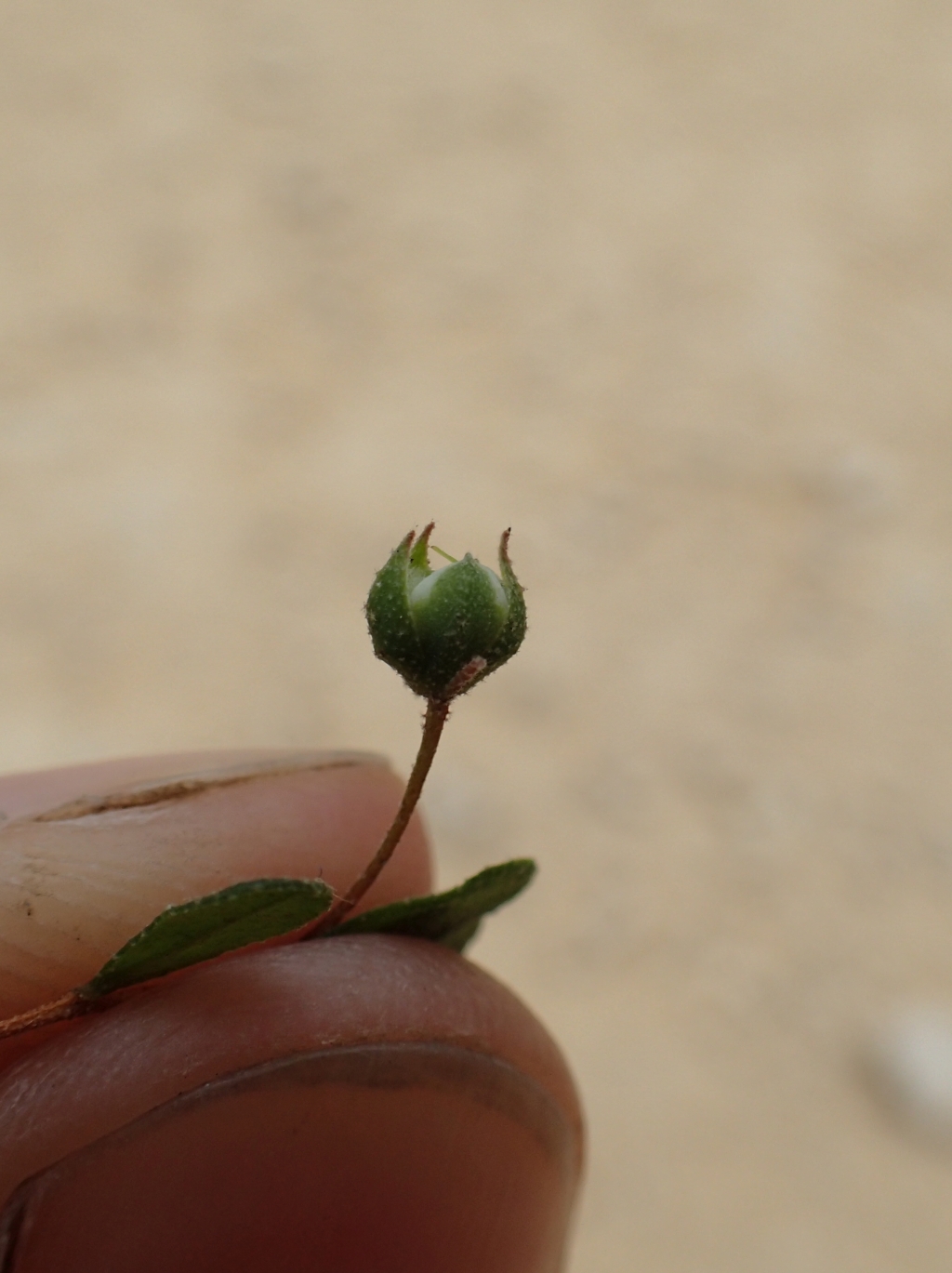Hibbertia pallidiflora
ToelkenDense shrubs; branches pubescent to tomentose, scrambling to 1.5(–4) m high. Vestiture of tubercle-based stellate hairs over smaller stellate hairs. Leaves obovate to elliptic-obolanceolate, 2–10(–13) mm long, 1–6.5(–7.2) mm wide, stellate-pubescent, puberulent to glabrescent, juvenile leaves with simple hairs on lower leaf surface; petiole up to 1 mm long; apex rounded to obtuse, rarely with mucro; margins narrow, ± recurved, distant from the scarcely raised central vein. Flowers on peduncles (1–)2–9.5(–14) mm long, terminal, rarely leaf opposed, on long and short branches, peduncle often connate to the developing axillary branch, subtended by 1 linear bract, 1.2–2.2 mm long, c. half the length of the sepals; sepals 2–4 mm long, unequal, stellate-tomentose; petals oblong-obovate, 1.3–2.5 mm long, cream to pale yellow, turning rusty-orange when dry; stamens (6–)8–13; filaments fused basally; carpels 2, stellate-tomentose. Flowers Aug.–Feb.
GleP, Brid. Also SA. Occurs in coastal heath and mallee vegetation in south-western Victoria.
Juvenile leaves have a mixture of stellate and hooked simple hairs, the latter not persisting, and are soon replaced by stellate hairs. Plants may resemble Hibbertia empetrifolia when only juvenile leaves are present, see note under that species.
 Spinning
Spinning

